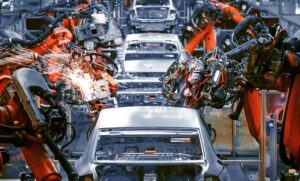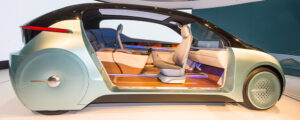The automotive industry has long been associated with advanced manufacturing techniques, from the assembly line to robotics. One of the latest and most exciting advances is the use of 3D printing in prototyping and small-scale production. 3D printing, also known as additive manufacturing, is a process of building a three-dimensional object by adding layer upon layer of material, usually plastic or metal. This technology is particularly useful in the automotive industry, where complex parts and components must be designed, tested, and produced in a cost-effective and timely manner.
Prototyping with 3D Printing
Prototyping is a crucial part of the automotive design process, as it allows engineers to test and refine their ideas before committing to expensive and time-consuming production. 3D printing is particularly useful for prototyping because it can quickly create complex geometries that are difficult or impossible to produce using traditional manufacturing methods. For example, 3D printing can be used to create intricate engine components or lightweight, aerodynamic body panels.

One of the main advantages of using 3D printing for prototyping is the speed at which parts can be produced. Traditional manufacturing methods, such as injection molding or CNC machining, can take weeks or even months to produce a single prototype. In contrast, 3D printing can produce a prototype in a matter of hours or days. This allows engineers to quickly test and refine their designs, reducing the time and cost of the overall design process.
Small-Scale Production with 3D Printing
In addition to prototyping, 3D printing can also be used for small-scale production of automotive components. While traditional manufacturing methods are often more cost-effective for large-scale production, 3D printing can be a useful option for producing small quantities of specialized or custom parts. For example, 3D printing can be used to produce interior components such as dashboard trim or air vent covers.
One of the main advantages of using 3D printing for small-scale production is the ability to produce complex geometries that would be difficult or impossible to produce using traditional manufacturing methods. For example, 3D printing can be used to produce parts with internal channels or hollow structures that would be difficult to produce using injection molding or CNC machining.
Another advantage of using 3D printing for small-scale production is the ability to quickly iterate and modify designs. Traditional manufacturing methods often require significant tooling and setup costs, which can make it difficult and expensive to make changes to a design once production has begun. In contrast, 3D printing allows for quick and easy modifications, making it an ideal option for small-scale production runs.
Case Study: Local Motors
One of the most well-known examples of 3D printing in the automotive industry is Local Motors, a company that specializes in the design and production of custom vehicles. Local Motors uses a combination of 3D printing and traditional manufacturing methods to produce unique vehicles that are tailored to the needs of individual customers.
Local Motors uses a process called “Direct Digital Manufacturing” to produce its vehicles. This process involves using 3D printing to produce the body panels and other components of the vehicle, which are then assembled using traditional manufacturing methods such as welding and painting.
By using 3D printing in the production process, Local Motors is able to produce unique and customized vehicles at a lower cost and with a faster turnaround time than traditional manufacturing methods would allow. The company also benefits from the ability to quickly iterate and modify designs, allowing for greater flexibility and customization.
One of the key benefits of 3D printing in the automotive industry is the ability to produce complex geometries that are difficult or impossible to produce using traditional manufacturing methods. This allows for greater design flexibility and innovation, which can help to improve the performance, efficiency, and aesthetics of vehicles. Furthermore, 3D printing can help to reduce waste and improve sustainability by allowing for more efficient use of materials.

However, there are also some challenges associated with the use of 3D printing in the automotive industry. For example, 3D printing can be slower and more expensive than traditional manufacturing methods for large-scale production. In addition, the quality and durability of 3D printed parts may not be as consistent or reliable as those produced using traditional manufacturing methods.
Despite these challenges, the use of 3D printing in the automotive industry is expected to continue to grow in the coming years. As the technology continues to advance and costs continue to decrease, 3D printing is likely to become an increasingly important tool for automotive designers and manufacturers.
Conclusion
The use of 3D printing in the automotive industry has revolutionized the way that designers and engineers approach prototyping and small-scale production. 3D printing allows for the quick and cost-effective production of complex parts and components, which can help to reduce the time and cost of the overall design process. While traditional manufacturing methods are often more cost-effective for large-scale production, 3D printing can be a useful option for producing small quantities of specialized or custom parts. In addition to prototyping and small-scale production, 3D printing also has the potential to be used for larger-scale production in the future as the technology continues to advance.






